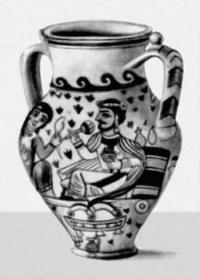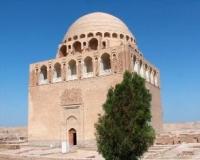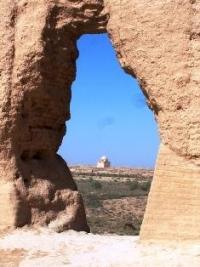You are here
Ancient Merv - East pearl.




Sights of ancient Merv in Turkmenistan.
“The Romans were frightened by a thundering noise, then their enemy attacked, piercing the steel armor of the Romans warriors”
Plutarch.
Excursions across ancient Merv.
There are 130 sq km of ruins north of Bairam Ali, still only partially excavated and understood. It is said that there five different walled cities here dating from five different eras, and that the oldest was named Iskander Kala after Alexander the Great.
But Alexander never came through Merv and anyway Erk Kala, on the west side of the site, probably pre-dates him by 200 years. A giant circular clay rampart is all that remains of what the German expert Klaus Pander believes was a VI century B.C. A.S. Margiana.
The name Gyaur Kala came later and means Castle of the Infidels. Only the four-sided outer wall survives, 20 m high and 2 km long. The city had been moving gradually west since the VIII century, so the third Merv is situated next to Giaur Kala on its west side.
Sultan Kala is much bigger than its predecessor, and potato-shaped. It’s outer wall was built by the Seljuks in the XI century. By the time of the Mongol invasions and a 150,000-volume library. To twenty-seven kilometers east of Mary, is the administrative center of the Mary velayat, the small town of Bairamali, known more for its health resort.
The town's northern limits come right up to the adobe fortress walls of Bairamalikhan-kala, the latest site added to the group ancient settlements which form the State historical and cultural reserve "Ancient Merv".
Its main sites are Sultan-kala (IX - XII centuries), Gyaur-kala (IIIrd century BC - IX century AD) and Erk-kala (1st millennium ВС) are 7 km away from the modem town. The most ancient excavated site of Merv, Gonur-depe, is much older than Erk-kala and dates to the middle of the 2nd millennium ВС During that epoch of the Bronze Age, civilization prospered in the delta of the Murgab river.
Some centuries later it was mentioned in a well-known Bek-histun inscription as the country of Mar-gush. In Avesta it was called Margav; ancient Greek and Roman geographers called it Margiana and Medieval Arab and Persian manuscripts described Maru or Merv.
The most ancient monuments of the country of Margush are lost in sand and difficult to reach. However, archaeologists are excavating intensively there. So, it is better to restrict sightseeing to those architectural monuments which are concentrated around "The pearl of ancient Merv" the Sultan Sandjar Mausoleum, rising high above the center of Sultan-kala.
Authority:
Bernshtam A.N. «History-archeologic sketches Central Tien-Shan and Pamir-Alay». « Religious and spiritual monuments of the Central Asia ». The author of M. Khashimov. Publishing house " Saga ", 2001 Tolstov S.P. « Ancient Khoresm », 1848. Tolstov S.P. « On traces Ancient Khorezm civilizations », М.-L., 1948. On materials of an information department of the State committee of Turkmenistan on tourism and sports.
Photos
Alexander Petrov.







